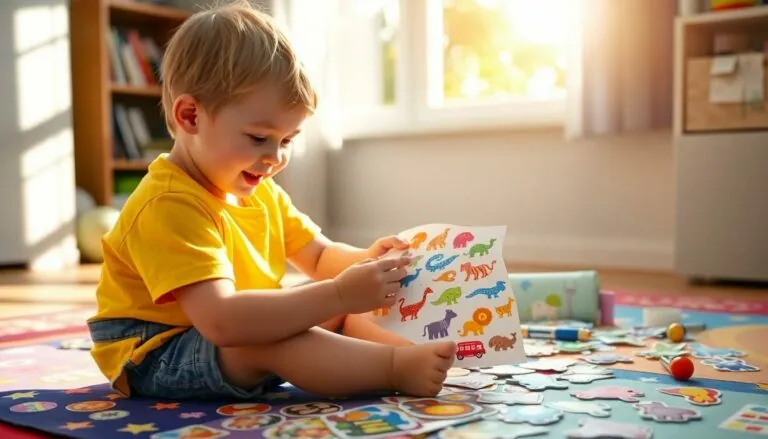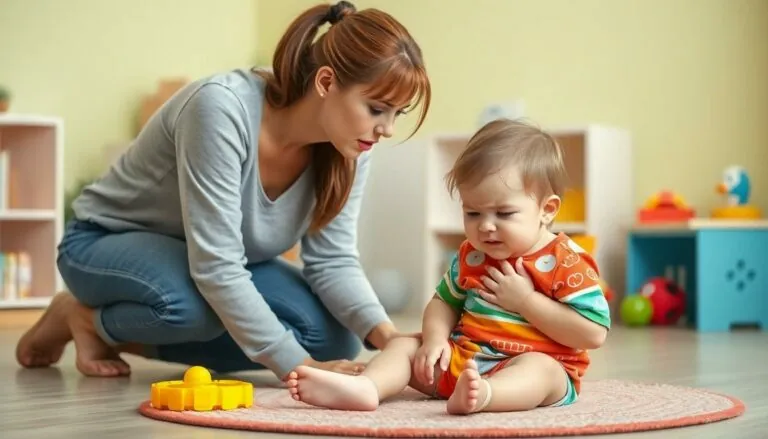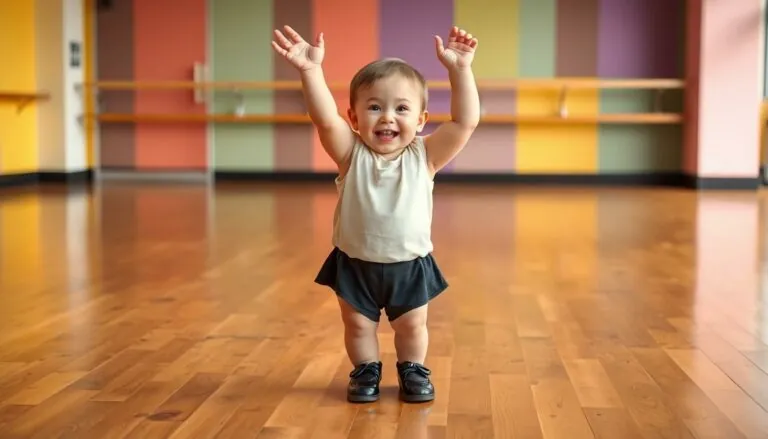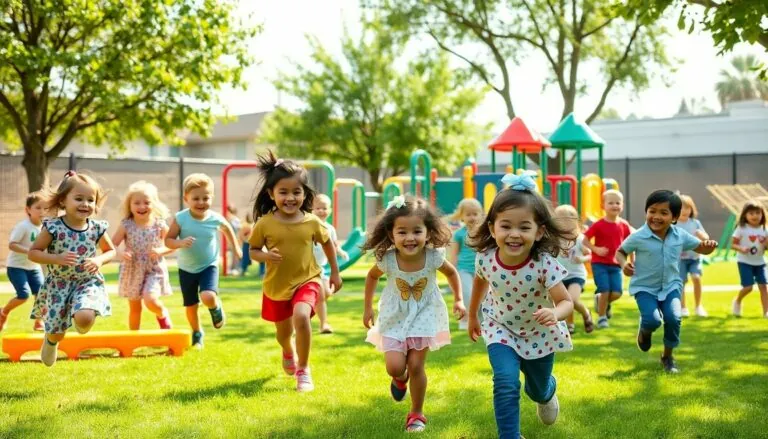Table of Contents
ToggleIn Ohio, the early learning standards aren’t just a set of guidelines—they’re a roadmap to success for young minds. Think of them as the GPS for childhood education, steering little learners toward a brighter future. These standards help educators craft engaging, developmentally appropriate experiences that make learning feel like play.
Overview of Ohio Early Learning Standards
Ohio Early Learning Standards provide essential guidelines for childhood education. These standards ensure that educators focus on creating engaging and developmentally appropriate experiences for young children.
Purpose and Importance
Ohio Early Learning Standards guide educators in effective teaching practices. They promote high-quality early childhood education to enhance children’s readiness for school. Focusing on developmental milestones, these standards help identify key areas for growth, ensuring children receive support tailored to their needs. Additionally, they encourage families and communities to engage in children’s learning processes. Aligning with state and national benchmarks, these guidelines maintain consistency in educational quality across programs.
Key Components
Ohio Early Learning Standards consist of several key components that are vital for comprehensive education. Specific domains, including Social and Emotional Development, Physical Development, and Language and Literacy, provide a framework for curriculum development. The standards also emphasize cognitive development through inquiry-based and hands-on learning experiences. Furthermore, they encourage differentiation, allowing educators to adapt instruction based on individual children’s strengths and interests. By incorporating these components, programs can foster holistic development in young learners.
Developmental Domains
Ohio’s Early Learning Standards focus on vital developmental domains that support holistic growth in young learners. These domains serve as the foundation for creating rich educational experiences.
Social and Emotional Development
Social and emotional development involves fostering skills like empathy, self-regulation, and relationship-building. Children learn to express their feelings and understand others’ emotions. Engaging in group activities encourages cooperation and communication. Educators promote positive interactions through role-playing and collaborative problem-solving. Development in this domain helps children build resilience, supporting their overall well-being and success in school.
Physical Development
Physical development encompasses both gross and fine motor skills that are crucial for overall health and wellness. Young children refine abilities like running, jumping, and throwing while also developing hand-eye coordination through activities like drawing and building. Regular physical play enhances strength and agility, while structured exercises boost confidence. Educators provide diverse opportunities to ensure children engage in activities that promote balance and coordination, essential for their ongoing physical growth.
Language and Literacy
Language and literacy development lays the groundwork for effective communication and academic success. Children begin by expanding their vocabulary through conversations and storytelling. Exposure to books and engaging reading activities fosters a love for literature while developing comprehension skills. Educators encourage phonemic awareness through songs and rhymes, making learning enjoyable. This domain emphasizes the connection between speaking, listening, and early writing skills, setting the stage for lifelong literacy.
Implementation Strategies
Effective implementation of Ohio’s Early Learning Standards requires thoughtful strategies that align with developmental goals. Educators play a vital role in creating an environment that supports young children’s growth across various domains.
Curriculum Alignment
Curriculum alignment means ensuring lessons reflect the standards. Teachers design activities that promote social and emotional skills, physical development, and language acquisition. Incorporating themes that resonate with children’s interests enhances engagement and learning. For instance, using stories that reflect children’s lives fosters a connection between the classroom and their experiences. By integrating hands-on activities, educators cater to different learning styles, reinforcing concepts in various ways. Adopting a balanced approach to curriculum development allows for flexible teaching methods while maintaining focus on key developmental milestones.
Assessment Practices
Assessment practices within Ohio’s framework assess children’s progress in real-time. Educators utilize observational assessments to gauge skills in a natural setting. Regular check-ins provide insights into each child’s developmental journey. By documenting children’s growth patterns, teachers can tailor instruction to meet individual needs. Combining formative assessments with structured feedback encourages a continuous learning cycle. Engaging families in these assessments fosters a collaborative approach to children’s education. Aligning assessment strategies with learning standards ensures that all aspects of development receive attention, supporting each child’s readiness for future educational challenges.
Resources and Support
Ohio’s Early Learning Standards offer various resources and support for educators, families, and the community. These resources enhance implementation and engagement across settings.
Professional Development Opportunities
Accessing professional development opportunities equips educators with the latest strategies for effective teaching. Many local organizations provide workshops, webinars, and training sessions tailored to Ohio’s Early Learning Standards. Participants can explore topics such as curriculum alignment, assessment techniques, and child development theories. Additionally, state-funded programs promote continuous learning, enabling educators to adapt their practices based on emerging research and best practices. Networking events foster collaboration, allowing educators to share experiences and ideas while strengthening their skills in early childhood education.
Community Involvement
Community involvement plays a crucial role in supporting children’s education. Engaging local organizations, libraries, and parent groups enhances learning opportunities. Schools often host events that invite families to participate, creating connections between home and school. Collaborative activities like workshops, open houses, and volunteer opportunities foster a supportive environment for children. When families actively engage in their children’s education, they reinforce the importance of the Ohio Early Learning Standards and contribute to children’s holistic growth. This collaboration creates a seamless learning experience that benefits both children and their communities.
Challenges and Considerations
Ohio’s Early Learning Standards face specific challenges that require attention for effective implementation. These challenges influence how educators approach early childhood education and impact children’s learning experiences.
Equity in Early Childhood Education
Equity remains a significant concern in early childhood education. Diverse populations often experience disparities in access to quality education due to socioeconomic and cultural differences. Ohio’s standards aim to address these inequalities by promoting inclusive practices. Incorporating diverse perspectives into curriculum encourages all children to engage fully in the learning process. Educators play a pivotal role in fostering equitable environments by recognizing and respecting cultural backgrounds. Furthermore, ongoing training helps educators address biases, ensuring every child’s needs are considered.
Addressing Diverse Learning Needs
Addressing diverse learning needs poses another essential challenge within the framework of the Early Learning Standards. Children bring unique strengths and challenges to the classroom, requiring tailored instructional strategies. Integrating individualized approaches supports all children, especially those with developmental differences. Educators focus on differentiated instruction to engage different learning styles. Observational assessments are vital in identifying specific needs, enabling timely adjustments to teaching methods. Collaboration with specialists can enhance support for children needing additional resources. The intention is to create a nurturing atmosphere that fosters growth and encourages the success of every child in Ohio’s education system.
Conclusion
Ohio’s Early Learning Standards play a vital role in shaping the educational landscape for young children. By providing a comprehensive framework, these standards ensure that educators can create enriching and developmentally appropriate experiences. The emphasis on collaboration among families, communities, and educators fosters a supportive environment that enhances children’s growth.
As the standards continue to evolve, they remain a crucial tool for promoting equity and inclusivity in early childhood education. With ongoing professional development and community engagement, Ohio’s commitment to high-quality education sets the stage for children’s success in their educational journey. Embracing these standards ultimately benefits not just the children but the entire community, paving the way for a brighter future.







